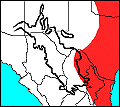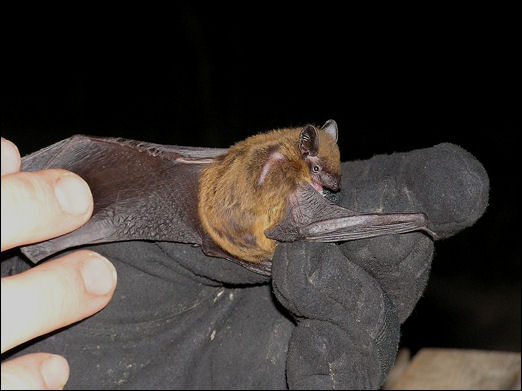


Nycticeius humeralis. U.S. Army photograph.
These bats are frequently found in forested areas and along watercourses, and often utilize hollow tree cavities as roosting sites and nurseries (Tuttle 2003). They also have been known to use the attics of houses and other man-made structures as roosts when natural sites are not available (Davis and Schmidly 1994). Evening Bats have been captured in all months of the year in Texas, indicating that they are year-round residents of the state. In summer, the adult males and females segregate to their separate roosts (Davis and Schmidly 1994). In late May or early June, the females form nursery colonies that may house 25 to 1,000 individuals, sometimes sharing the roost with another species (commonly the Mexican Free-tailed Bat) (Tuttle 2003). It has not been determined where their winter roosts are, but it is speculated that they are also in tree hollows (Tuttle 2003).
Davis, W. B., and D. J. Schmidly. 1994. The mammals of Texas. Texas Parks and Wildlife Press, Austin.
Tuttle, M. D. 2003. Texas bats. Bat Conservation International, Inc., Austin.
A. Ruth Huckaby, Graduate Student, BIOL 5301-Natural History of the Chihuahuan Desert, June, 2006.
Huckaby Update: 22 June 2006
Last Update: 25 Jul 2009